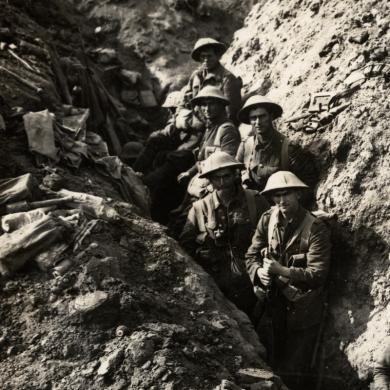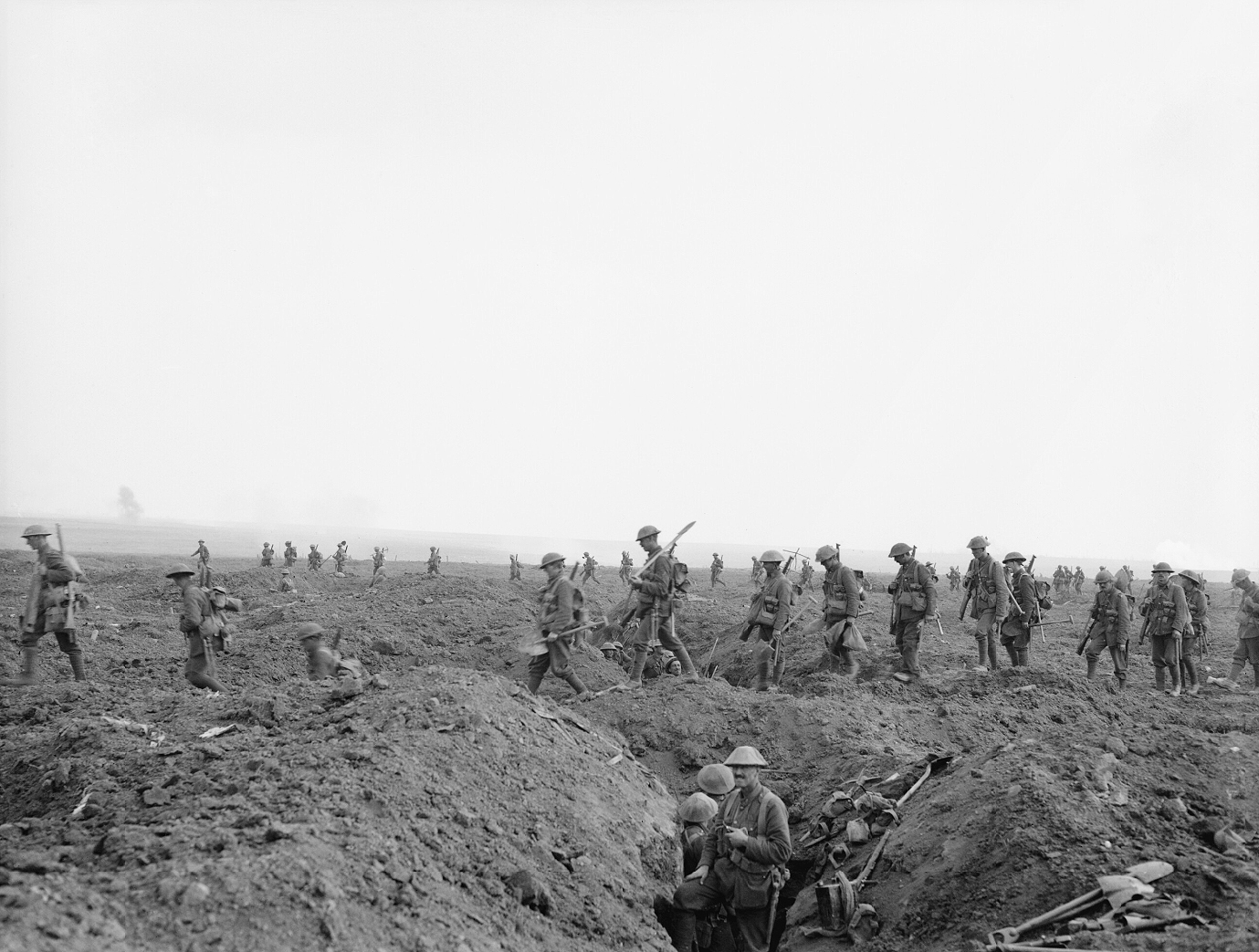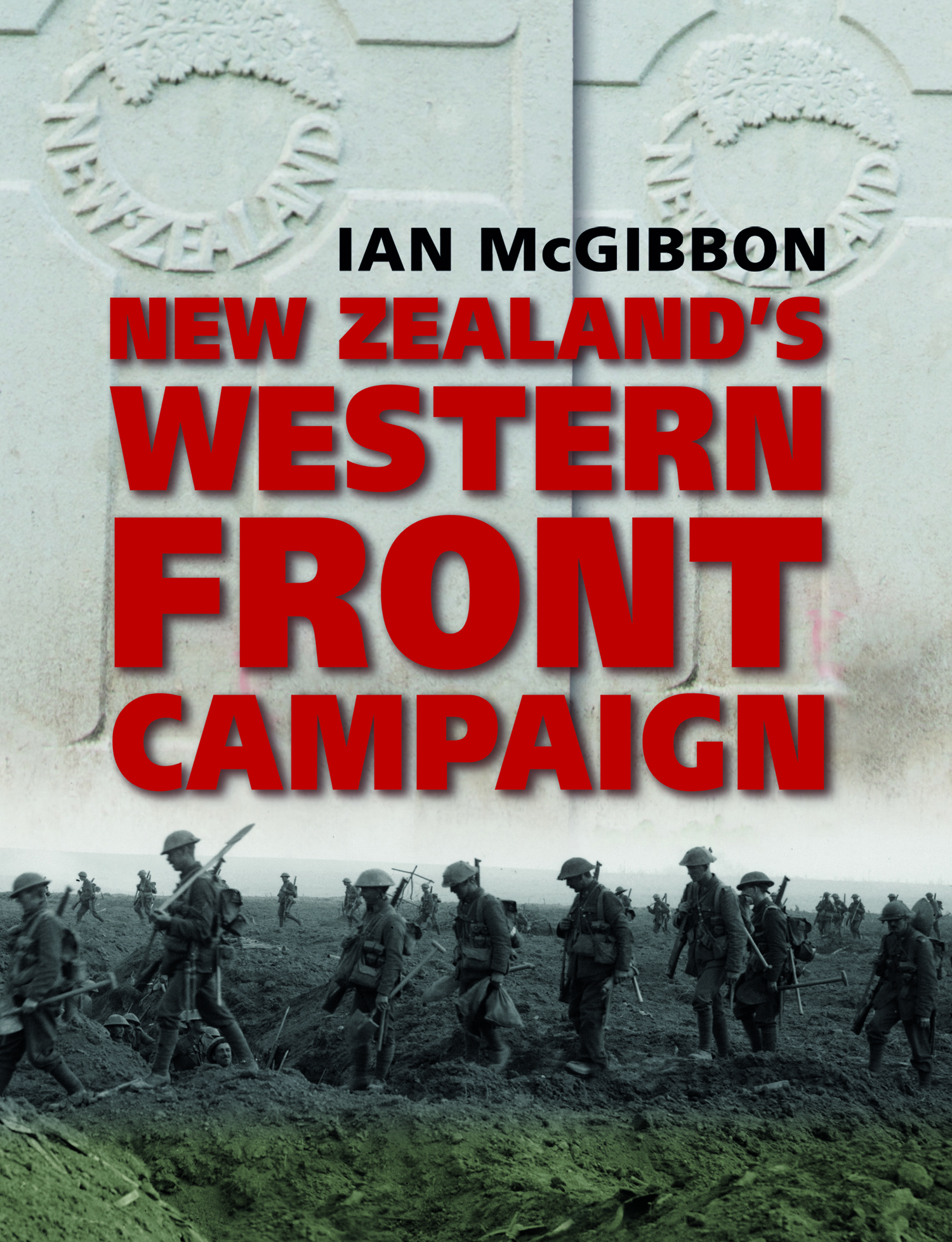On the centenary of New Zealand's entry into the Somme, historian Ian McGibbon – author of New Zealand's Western Front Campaign – asks what toll the battle took on the New Zealand Expeditionary Force, and the men who survived.

New Zealand soldiers in Switch Trench during the Battle of the Somme. Image courtesy of the New Zealand National Army Museum, accession number: 2007.549
In September 1916 the New Zealand Division was drawn inexorably into the vortex of the great battle that had been raging on the Somme since 1 July that year. The battle would brutally demonstrate the realities of the Western Front to the New Zealanders, who had been introduced to the campaign in April following their withdrawal from Gallipoli.
With 55 of the British Army’s 58 divisions fated to take part in the Battle of the Somme, it was only a matter of time before the New Zealand Division received the call to join the fight — a call that foreshadowed New Zealanders, for the first time, ‘hopping the bags’ to make a major assault. It also foreshadowed a scale of sacrifice far exceeding that of previous operations involving the New Zealand Expeditionary Force. What toll did the battle of the Somme take on the Division, and on those who survived?
For New Zealand, the Battle of the Somme was the biggest tragedy in its history to that point. More than a third of those who took part, some 6700 in all, had become casualties; 2000 of that number had lost their lives. The long casualty lists soon filling the newspapers shocked those at home. In the 23 days New Zealand Division spent on the Somme, its losses approached those of the eight-month Gallipoli campaign, albeit in a force three times larger. As they contemplated their depleted battalions, officers of the New Zealand Division were also deeply affected. When their commander, Earl Johnston, visited them afterwards, the men of 1 Brigade found ‘he was quite broken up, and the tears were in his eyes’.

New Zealand troops crossing the old German front line during the advance towards Flers, 15 September 1916. Image courtesy of Imperial War Museum © IWM (Q 188)
For the New Zealanders participation in the battle had been a learning experience, and an eye-opener. As one Gallipoli veteran noted in a letter home, ‘most of us who were not on the Peninsula did not know much about war until we came into this part of it’. Rawei McLean was convinced that they could now say they had seen the last thing in modern warfare. ‘What with gas, liquid fire, and big shells, it is hell with the lid off as they say.’ Lindsay Inglis put it more succinctly: they had participated in ‘a month of real war this time’. At the Somme, pioneer George Williamson maintained, they had seen war ‘in all its nakedness and the grimness of it’. Harry Dansey, like his brother Roger an officer in the Pioneer Battalion, wrote home of ‘the Hellish zone of the Somme, where the blood of men red[d]ened the Duck-boards along the Communication Trenches for miles, where the surface of the land was more or less covered by unburied corpses in hundreds and hundreds, where unclaimed and detached portions of our brave men lay scattered broadcast, a head here a leg there, a limbless trunk, where the atmosphere was over-powering with a pungency beyond description...’
Mingled with horror, for the survivors, was a sense of satisfaction. They had been in the crucible and emerged with new confidence because of their performance. ‘We left the Somme with a conviction of superiority over the German infantry,’ according to Lesley Inglis, ‘and an inward glow of pride in the service given by our division, which, almost throughout, had stretched a helping hand to either flank from a salient of its own making.’ To Rifleman Adolphus Barrett ‘It was awful; nothing but death and destruction. But we won!’ Despite the losses, Charles Carrington thought the battle had enhanced morale among the troops, based on ‘a definite and glowing sense of superiority over the enemy, man to man.’
There was a sense of moral ascendancy over their opponents. Signaller James McClatchy of 4 Rifles considered the Germans ‘the biggest cowards I have ever met in my life’, willing to fire away on the advancing troops but when they got near throwing off their equipment and putting their hands up. Ian McLeod agreed that ‘Fritz is not much as a fighter. He will not fight fair and is generally anxious to be taken prisoner.’
.jpg)
New Zealand soldiers in Switch Trench shortly after its capture in the Battle of Flers-Courcelette, part of the Somme offensive. Image courtesy of the New Zealand National Army Museum, accession number: 2007.549
Most of the New Zealanders looked forward to the resumption of the offensive after the winter of 1916/17. Many also revised their previously negative opinions about the British. The fighting on the Somme had been ‘a sight worth seeing’ in sapper NCO John Snodgrass’s opinion: ‘After our experiences in Egypt and on Gallipoli, I’ve always had rather a contempt for the British army and the Tommies, but the Tommy of the Somme is a mighty different proposition to those at Suvla Bay, etc.’
The New Zealanders’ satisfaction with their effort was reinforced by laudatory comments from British generals in the aftermath of the battle. Lieutenant-General Sir Alexander Godley, commander of the II Anzac Corps, was pleased by the enthusiastic praise he received from his superiors: ‘the things which had pleased them more than anything,’ he noted, ‘were that, though the Division was in the line for 23 days … they had never asked to be relieved, or made any difficulties about staying, and also whenever they had an objective given them, or a job to do, nothing was heard of them till they reported that they had done it. Altogether the Division earned golden opinions.’
For the New Zealanders, the Somme had been an exhausting and searing experience. The survivors needed rest and recuperation; the Division needed restoration. As the troops recovered from their ordeal in their former training ground around Armentières, reinforcements arrived to bring units back to full strength. With the Somme Offensive only having made limited gains, the New Zealanders had no illusions about the brutal fighting to come.
This article was adapted from Ian McGibbon’s forthcoming book New Zealand’s Western Front Campaign – the first official history of New Zealand on the Western Front since 1921.
